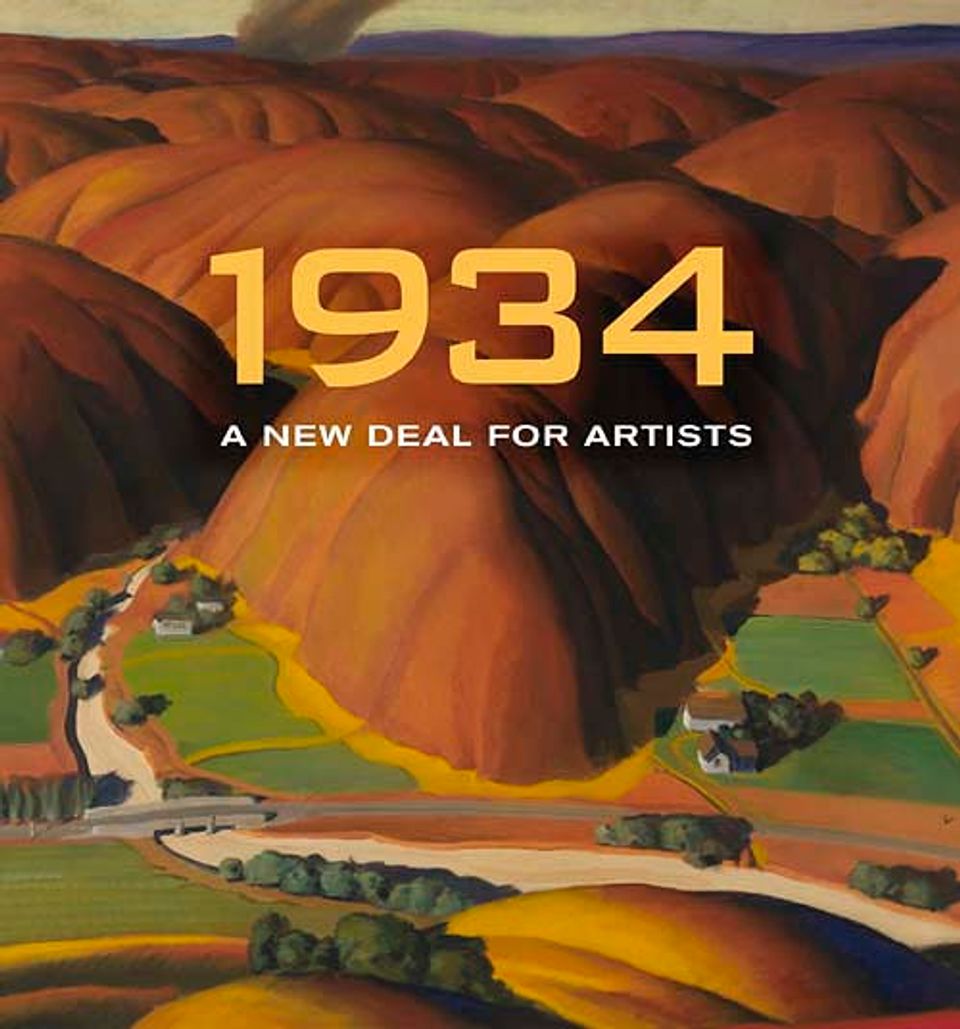Artwork Details
- Title
- Northern Minnesota Mine
- Artist
- Date
- 1934
- Location
- Not on view
- Dimensions
- 40 x 50 1⁄8 in. (101.6 x 127.2 cm.)
- Credit Line
- Transfer from the U.S. Department of Labor
- Mediums
- Mediums Description
- oil on canvas
- Classifications
- Subjects
- Figure group
- Landscape — Minnesota
- Architecture — industry — mine
- Occupation — industry — mining
- New Deal — Public Works of Art Project — Minnesota
- Object Number
- 1964.1.49
- Research Notes
Artwork Description
Albinson, a native of Minnesota, knew the iron mines of northern Minnesota's Mesabi Range well; in 1932 one of the big mining companies had hired him to paint local scenes, including the Spruce and Mesabi Mountain mines. In his PWAP painting, Albinson took evident delight in the characteristic rusty orange of the iron-laden soil, playing it against a pale blue sky, green bushes, and a vivid turquoise shed.
1934: A New Deal for Artists exhibition label














